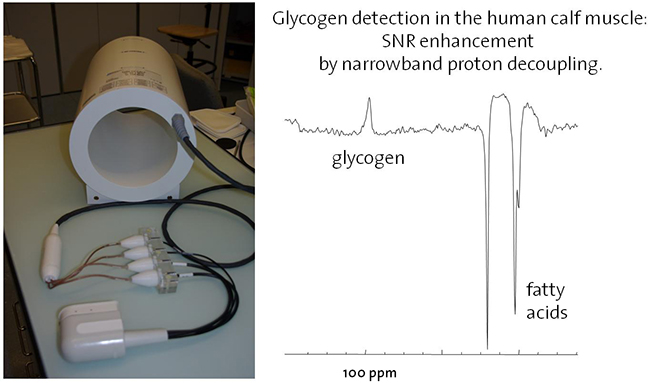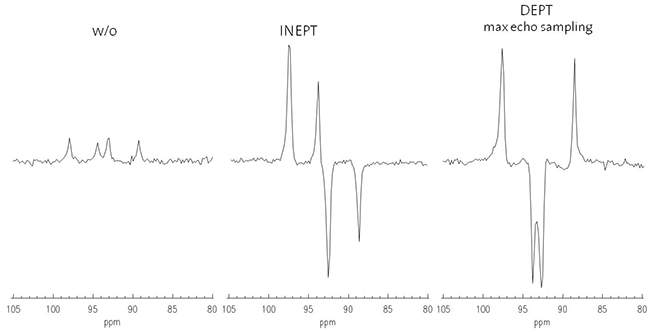13C MRS
In vivo 13C MR spectroscopy makes metabolic information accessible that cannot easily be obtained by other non-invasive methods. The large chemical shift range of 13C MR spectra allows for discrimination of resonance lines which are difficult to resolve in 1H MRS. In addition, T2 relaxation times in 13C MRS are in generally longer than those in 1H MRS and thus only 13C MRS enables the detection of large and immobile molecules such as glycogen. Last but not least infusion studies based on specifically 13C labelled metabolites such as glucose , acetate or pyrovate enable insight into metabolic turnover rates.
One of the major drawbacks of 13C MRS applied to humans is its low sensitivity, which is a consequence of the low natural abundance and the low gyromagnetic ratio of carbon nuclei with isotope 13. Furthermore, most carbons have attached protons, resulting in multiplet structures which further decrease sensitivity.
The final aim of this project and key issue for the application of 13C MRS to clinical and physiological studies of brain, liver and muscle is reliable quantification. To that reproducible SNR enhancement methods, a proper volume definition, a stable reference standard and reliable fitting are necessary.
More specifically in vivo 13C MRS shall be enabled at high (3T)and ultra-high (7T) field strength, combined with the ERETIC reference standard, optimized coils and volume definition based on INEPT or DEPT in combination with outer-volume suppression. SNR efficiency of different SNR enhancement methods shall be tested.
Contact
No database information available

